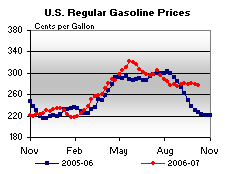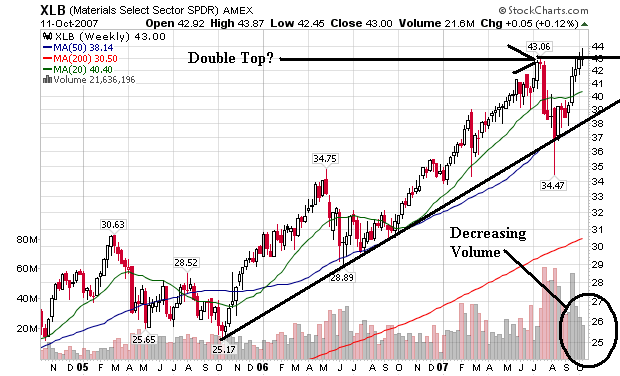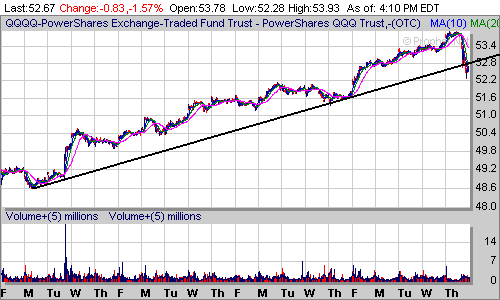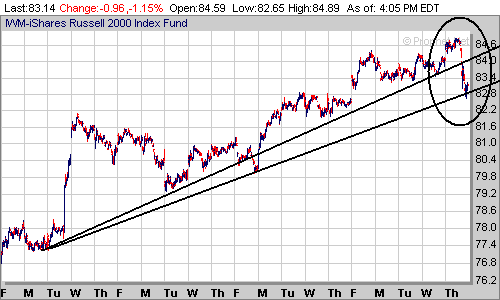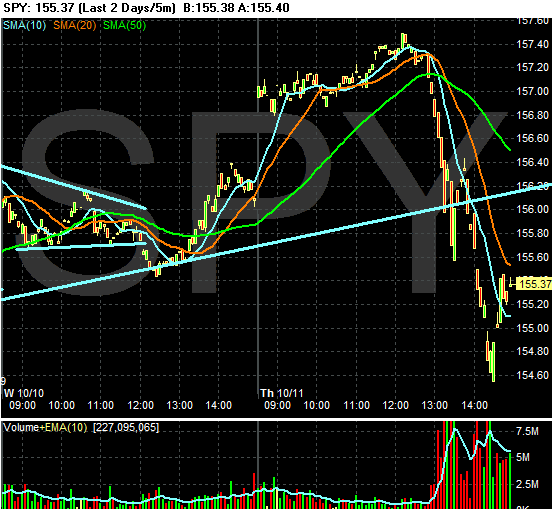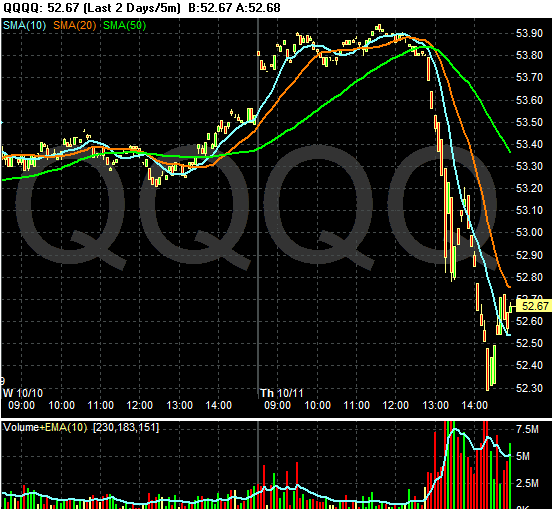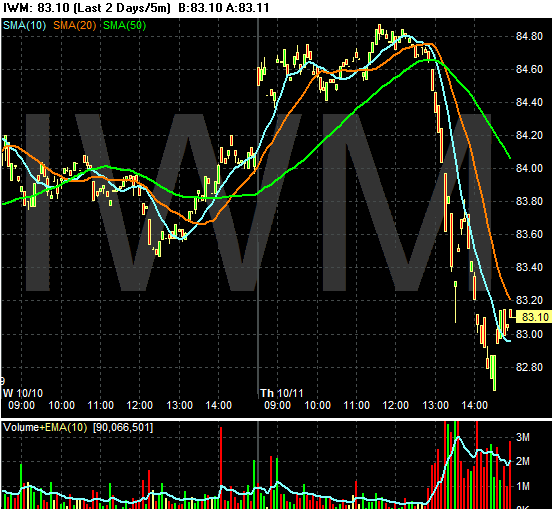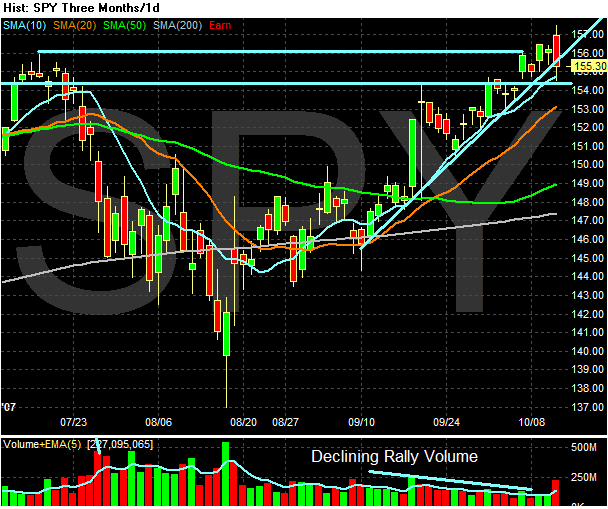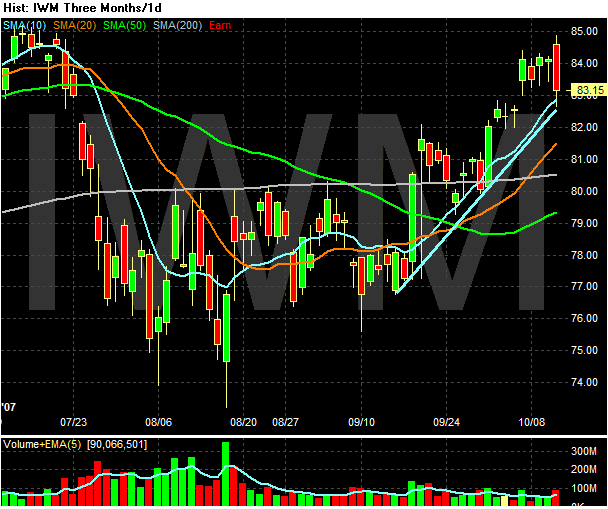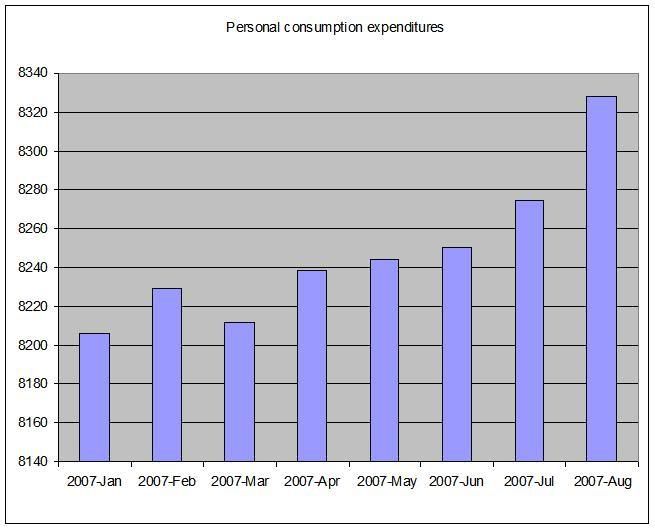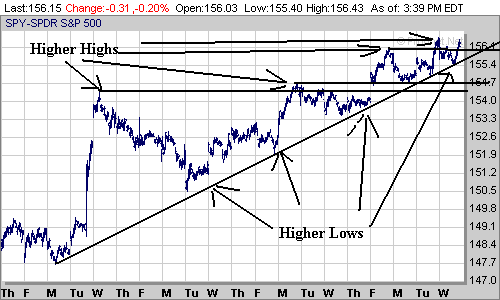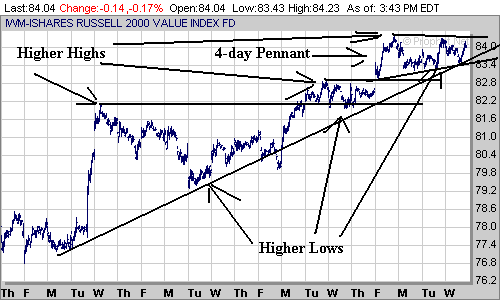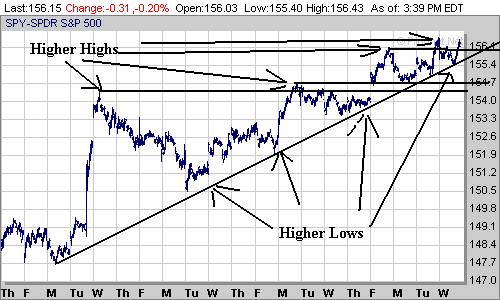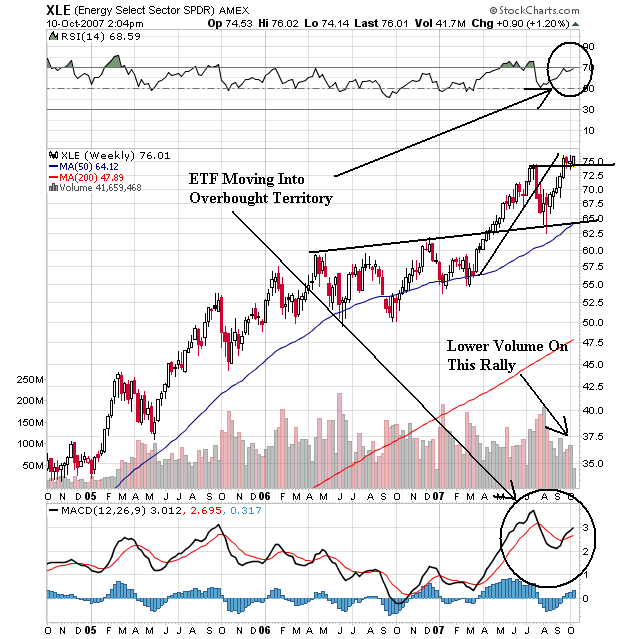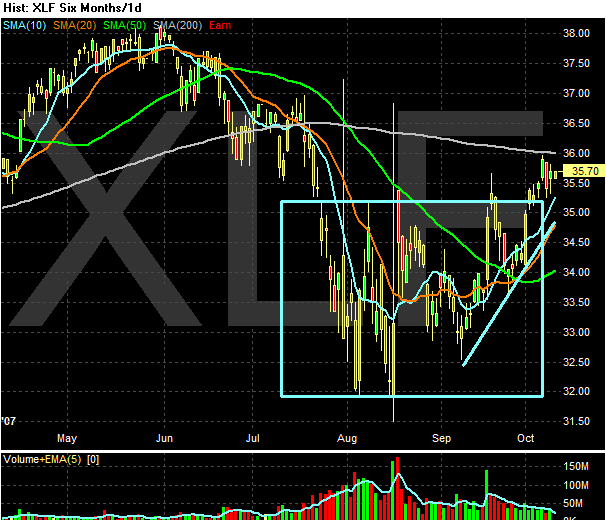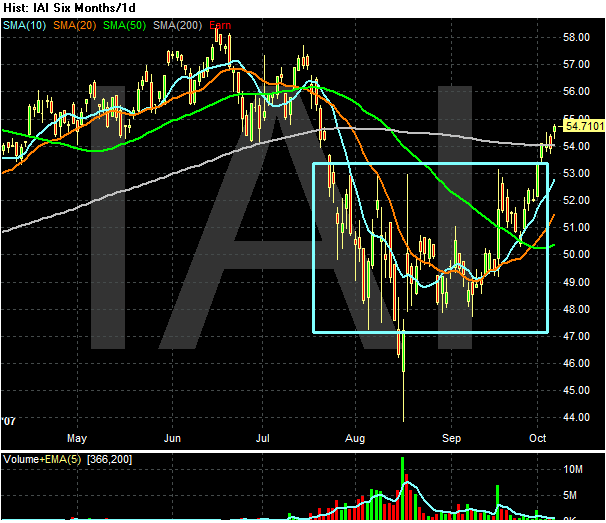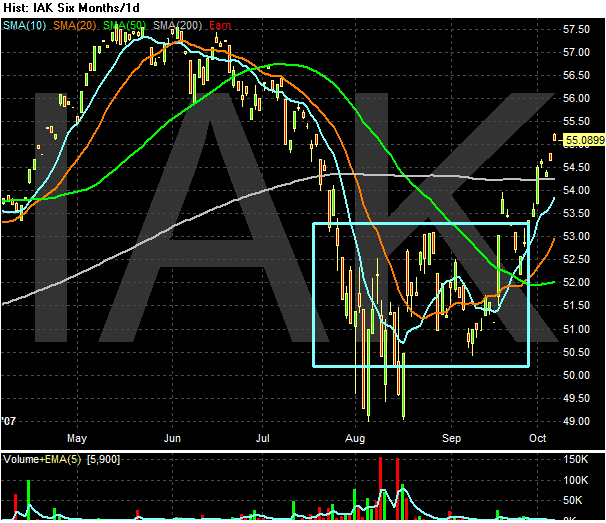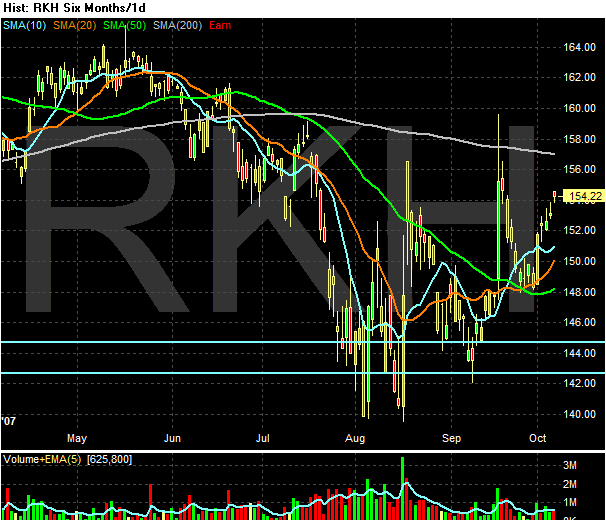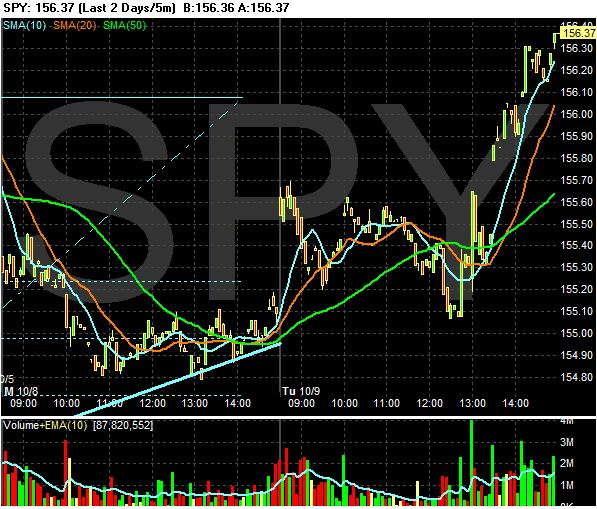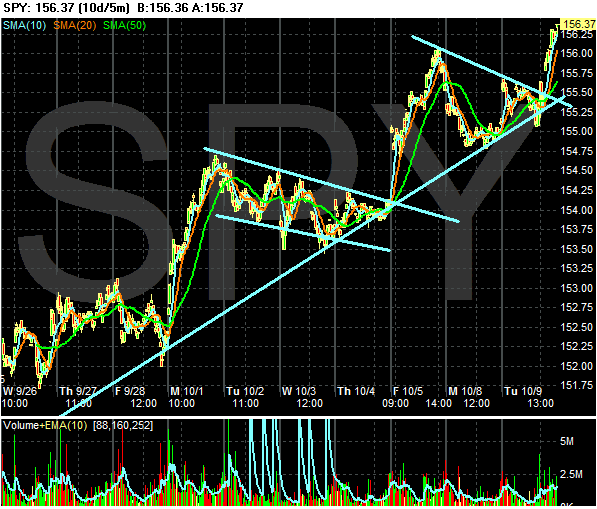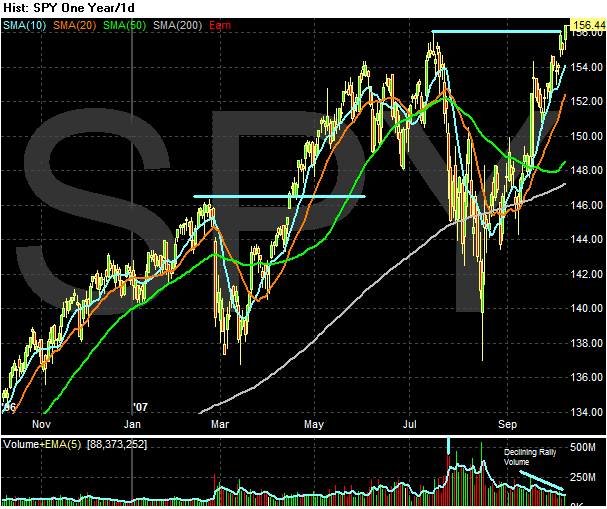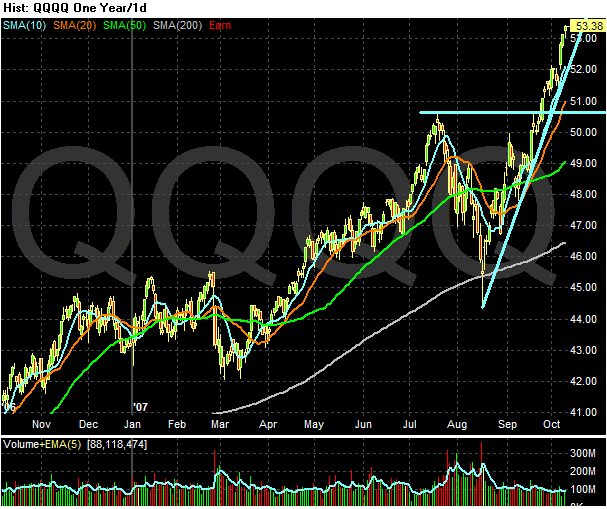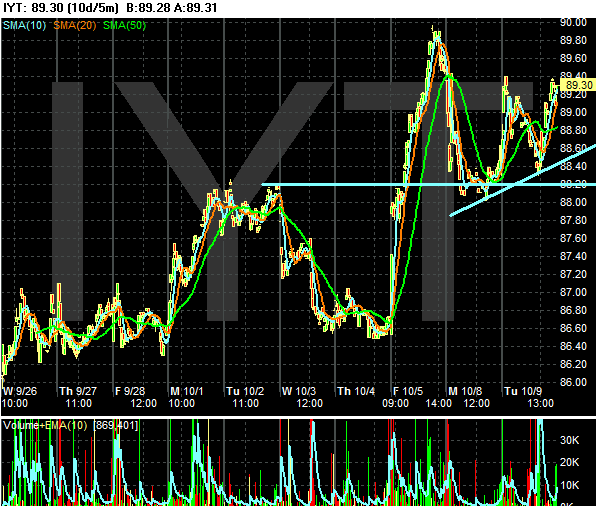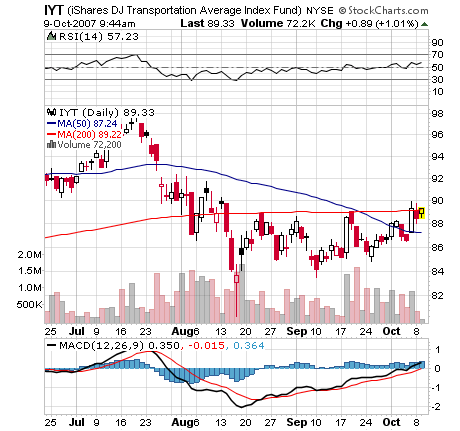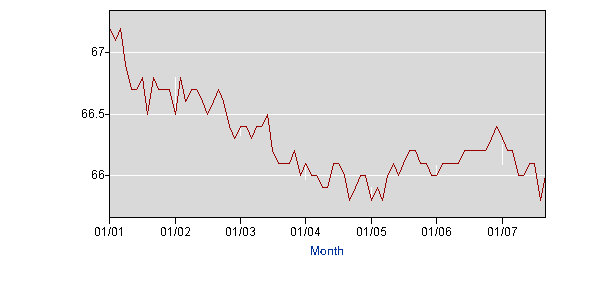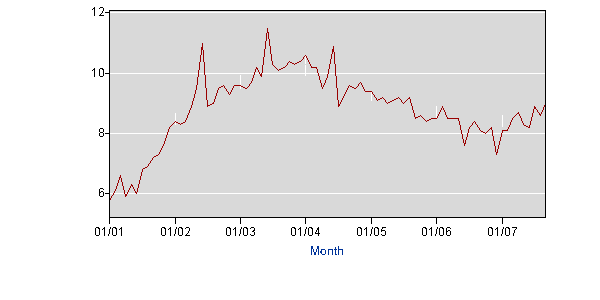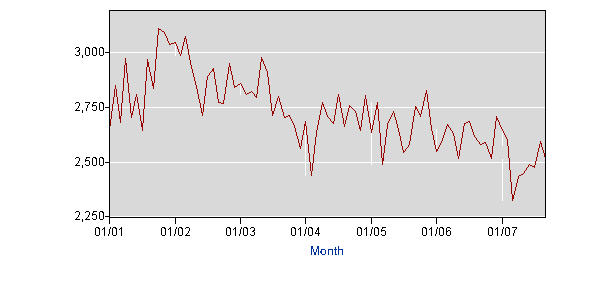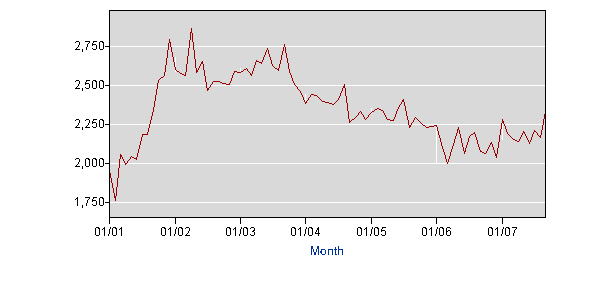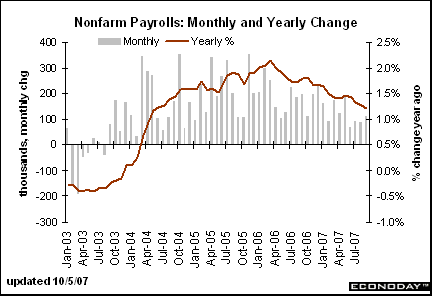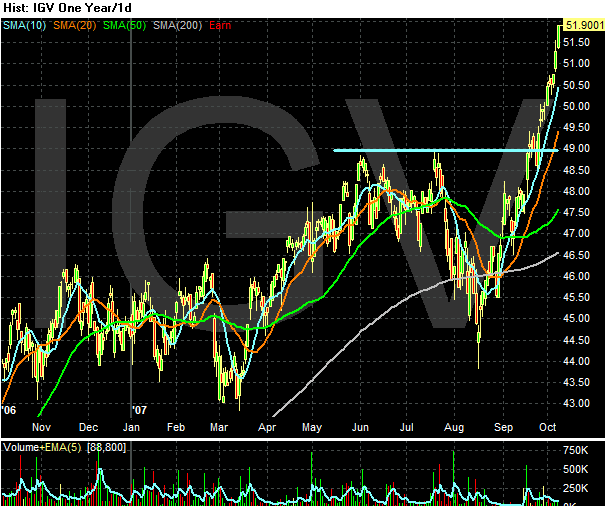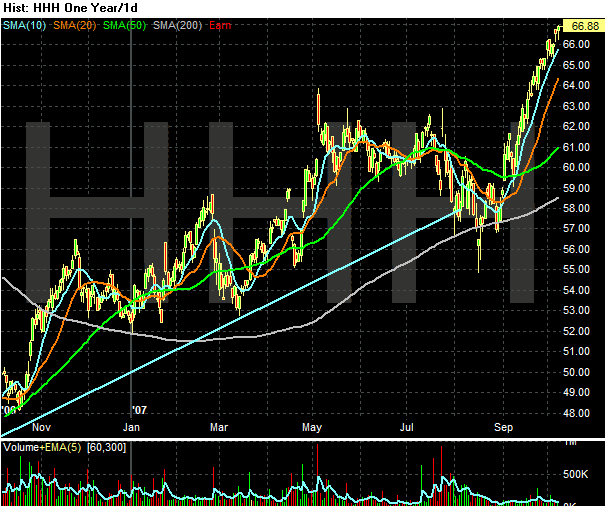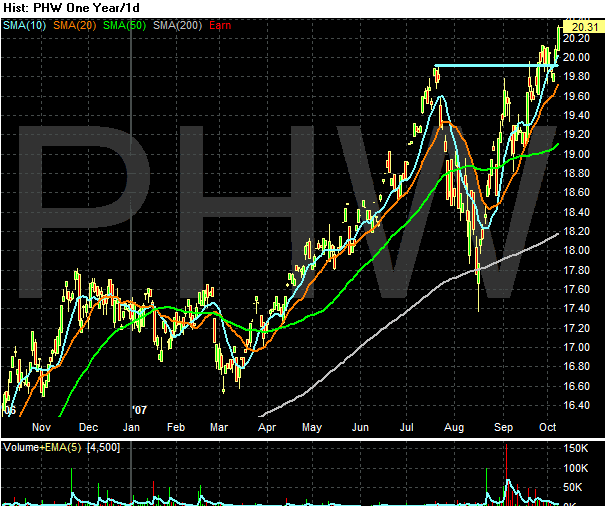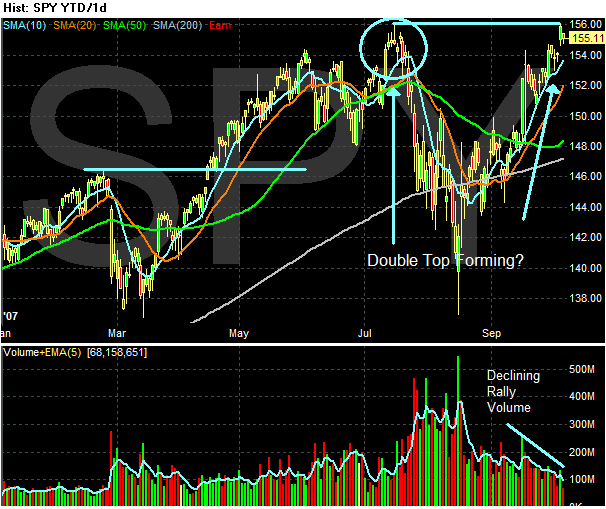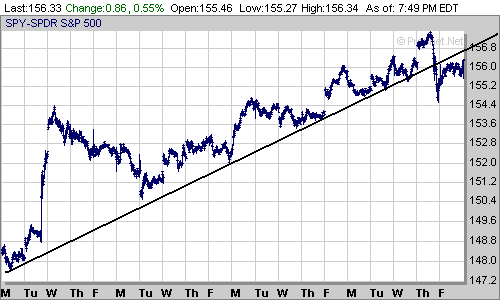
Above is a 20 day SPY chart in 5 minute increments. Notice how the market has been rallying since a few days before the Fed meeting. After the Fed cut rates, the market moved higher making higher highs and lower lows. However, on Thursday the market broke through support. On Friday the market continued to trade below the trendline.
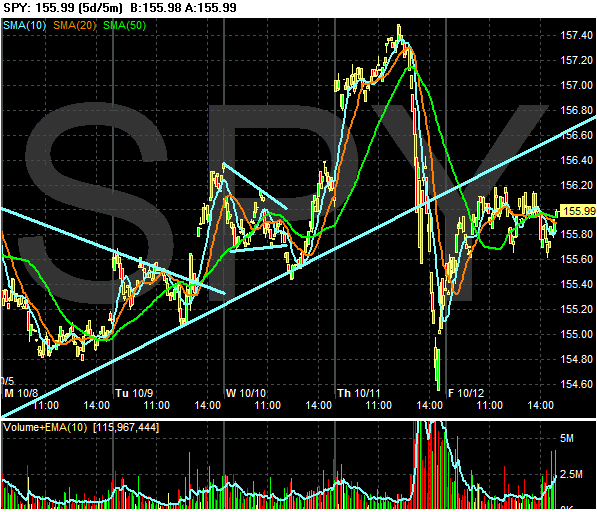
Above is a chart of last week's SPY action in 5-minute increments. Notice the heavy selling that occurred on Thursday, along with the long candles. Both of these factors indicate traders were looking for a reason to sell, and Thursday's news gave them ample reason.
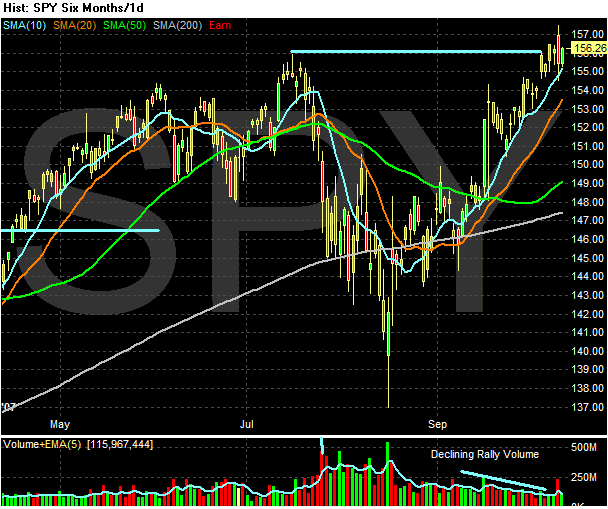
I've been on a double top watch for the SPYs for the last week or so. Last week's action -- especially the heavy selling near an important technical price point -- gives me a reason for concern. The earnings news from the financial sector has been terrible. Most major financial companies have reported big hits to their earnings from the credit mess. The energy sector is getting hit by tighter refining margins. In short, so far this earnings season has raised some red flags. We are still early in earnings season, so all of this could change over the next few weeks.

The QQQQ's continue their rally. They have moved convincingly above previous highs and last week's sell-off has done little technical damage to the chart. There has been a quiet rally across the technology sector.
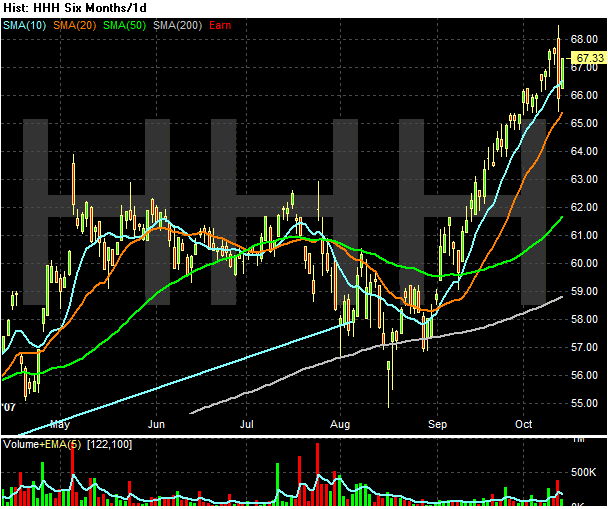
The internet sector has rallied

As has software

And electronics

The Russell 2000 is also moving up. However, this index has to get above the 85 level before it moves into new territory. While it is encouraging to see this index moving up, new territory is where it will make its mark.
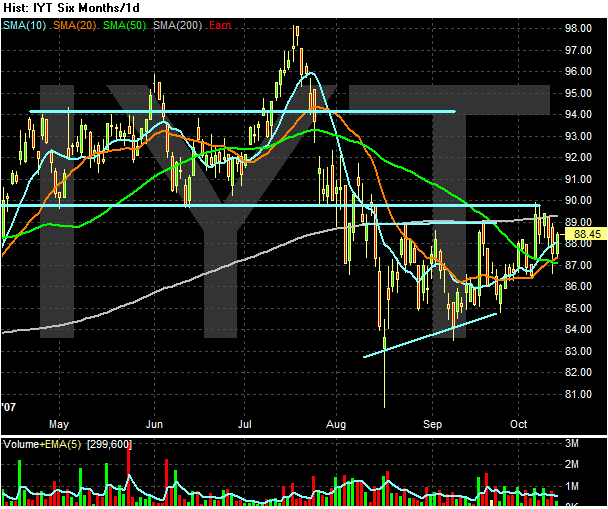
The Transports still haven't confirmed the rally.
So -- where does this leave us.
With the SPYs breaking trend at previous resistance, my concern level has gone up. We've had a nice post rate cut run, but now reality is setting in. Earnings aren't expected to do well this quarter. The Financial sector is taking a major hit. Retail sales were so-so (unless you count the increase in gas station receipts). Traders are starting to figure out the rate cut was not a panacea for all that ails the economy; there are still fundamental issues that won't easily go away.
The real test will be the earnings releases over the next few weeks. Traders may have set their sights artificially low, meaning companies can easily break expectations. However, we could also have a lot of downside earnings surprises. This is a very fluid situation.

